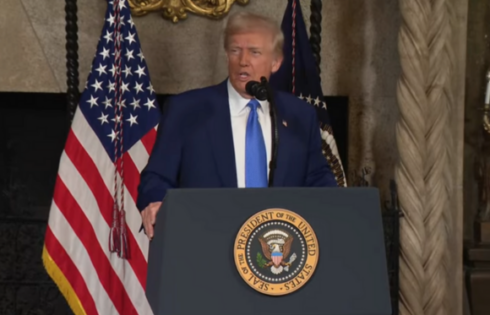 At Stanford this year, religious leaders have become increasingly aware of the school’s “all-comers” policy—one that some say wasn’t widely enforced before 2010’s high profile Supreme Court decision on the issue.
At Stanford this year, religious leaders have become increasingly aware of the school’s “all-comers” policy—one that some say wasn’t widely enforced before 2010’s high profile Supreme Court decision on the issue.
The Supreme Court’s CLS vs. Martinez ruling allowed a California college to defund a Christian legal group because the group refused to allow members who engaged in homosexual behavior—due to the school’s all-comers policy.
CLS established the constitutionality of all-comers policies at public colleges and universities, granting schools the right to withhold funding and deny formal recognition to student groups that reject students who do not share that group’s ideological perspective either in opinion or by practice.
The Stanford policy in question states: “Membership in student organizations must be broadly open to all currently registered Stanford students.”
“To my knowledge, and certainly in the 10 years that I have been here, it’s always been our policy,” said Rev. Scotty McLennan, Dean for Religious Life.
Whether the university and student groups enforced the policy as an all-comers in practice before the ruling, however, is a different matter.
Rev. Glen Davis, professional leader of Chi Alpha Christian Fellowship, said that while technically there has been no actual change in policy, the danger to Stanford’s religious community lies in the reinterpretation of the policy. According to Davis, the university believes that religious community aligns itself with the standards set forth by the Supreme Court’s ruling.
“Stanford, as a private university, is free to abide by or disregard the Supreme Court’s ruling,” Davis said. “Yet they have chosen to get on board with it for ideological reasons, discovering that low and behold, ‘we have the exact same policies as UC Hastings.’”
Davis said the enforcement of the policy is a recent development—possibly in reaction to the ruling. According to Davis, the policy was emphasized at the Stanford Associated Religions meeting, a quarterly event that brings together representatives from all 35 of Stanford’s religious groups.
“It was presented to us as ‘This is what we’re doing,’ which implies to some extent that this is a novel interpretation of the policy,” Davis said.
Regardless of whether an all-comers policy was already implicit in Stanford’s rulebook, McLennan said that is it important that Stanford at least not appear to be in blatant defiance of federal law.
“In general we in private institutions should keep our eye on the U.S. Constitution,” he said. “It seems unseemly to me if we would say ‘Well we’ll actually do things that might violate the Constitution if we were a public institution because we’re a private institution.’”
According to Davis, that misses the point altogether.
“The Supreme Court didn’t say colleges should enact all-comers policies,” Davis said. “It said that colleges are allowed to enact all-comers policies or are free to hold very different policies.”
Davis said it is possible that the Supreme Court justices themselves are distanced from life on college campuses, unable to fully comprehend the role of religious organizations on campus. Instead, he believes that the university should craft a different policy—one which recognizes that religious freedom, freedom of speech, and freedom of association are inextricably linked.
He’s not alone. When the ruling was announced, Student Press Law Center’s Adam Goldstein wrote, “the rationale of (CLS v. Martinez) could end up doing more violence to student expression rights than any decision in the last 22 years.” The Foundation for Individual Rights in Education called the decision a “blow to freedom of association and religious liberty on campus.”
Although McLennan believes Stanford is well within its rights and responsibilities to implement policies similar to those deemed constitutional by the CLS case, Davis feels that an effective all-comers policy unfairly targets religious groups.
“From my perspective, this is what it’s really all about—homosexuality,” said Davis. “That was the triggering issue at UC Hastings and that is the flash point at colleges across America.”
The court’s ruling, and consequently Stanford’s interpretation of its own policy, implies that in a situation where a religious group denies membership or the promotion of a leadership position to a homosexual, that group can then legally be barred from using campus facilities as well as denied university recognition as an official student group.
But, possibly separate from LGBT issues, other questions remain: In the event of such a conflict, can a university force a religious group to elect leaders who do not share their group’s mission statement or who are not faithful to that group’s shared moral code?
“In America, elected officials take an oath of office pledging to uphold certain values. Likewise, we want to be free to require our leaders to pledge to uphold the values of our organization,” Davis said. “I don’t think that’s irrational or weird.”
Still, McLennan believes that it is unlikely that a group will be subjected to the leadership of someone contradictory to that group’s founding values.
“You’re not going to worry about the organization electing somebody who doesn’t stand for what the organization is all about,” he said. McLennan further disagree
Even in absence of an interpreted all-comers policy, McLennan disagrees with the assumption that groups would be actively turning students away.
“I have never had any indication that anyone was trying to limit their membership,” McLennan said. “It always seemed that they, almost by definition of being a religious group, wanted as many people as they could get to join; so I believe that our policy as a university has always been consonant with what religious groups are doing.”
Rubi Ancajas is a staff writer for the Stanford Review, and a contributor to the Student Free Press Association.
Like The College Fix on Facebook / Follow us on Twitter





Please join the conversation about our stories on Facebook, Twitter, Instagram, Reddit, MeWe, Rumble, Gab, Minds and Gettr.